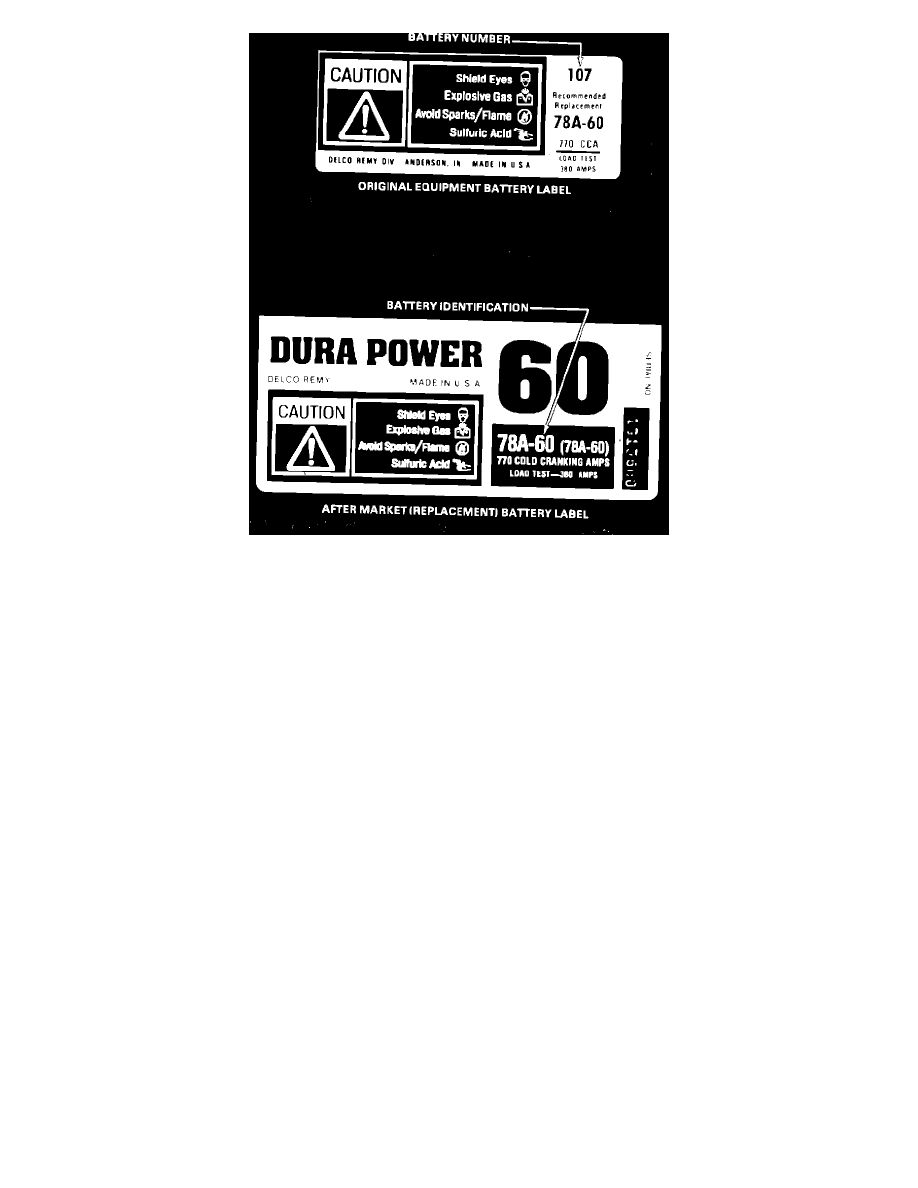Ninety-Eight FWD V6-260 4.3L DSL (1985)

FIGURE 1 - CAUTION LABELS USED ON BATTERIES TO BE REPLACED
PART A - INSPECTION OF BATTERY
1.
Open vehicle hood, cover fenders, and inspect "Caution" label on top surface of battery. Refer to Figure 1.
a.
Replace batteries identified as original equipment number "107" or aftermarket (replacement) number "78A-60" on "Caution" label following
the complete procedure in PART B of this procedure.
b.
DO NOT replace batteries that ARE NOT identified as described in Step "a" above, as no further action is required, except to install a
campaign identification label, Step 10 of PART B of this procedure.
PART B - COMPONENT INSPECTION. CLEANING, REPAIR AND REPLACEMENT
CAUTION: Follow recommended precautions in handling batteries and potential battery acid contamination components. Battery acid is corrosive.
Proper protective clothing and safety glasses should be worn during the following work:
1.
Disconnect battery negative cable, positive cable, remove retainer screw and retainer. Carefully remove battery, tag with vehicle information, and
store in a safe area for disposition.
2.
Inspect the following areas for evidence of battery acid. Make note of areas where acid or acid residue can usually be identified as a whitish
discoloration or deposit. Acid can result in corrosion of paint peeling on metals and softening and blistering of rubber and certain plastic
compounds.
a.
Battery tray, hold-down bolt, and plastic clamp, b. Left inner fender area, (right inner fender area if diesel engine),
c.
Left shock tower, d. Left horns, e Radiator, (air conditioning line, muffler hose, etc. diesel engine only),
f.
Lower radiator support, g. Transmission oil cooler lines, hoses, and clamps, (gasoline only),
h.
Power steering oil cooler lines, hold-down bracket and bolt, i. Hood release cable, j. Windshield washer hose, k. Upper radiator hose and
clamp at radiator, l. Air cleaner housing and inlet area (3.8L engine only),
m.
Hood insulation above battery, n. Engine cradle under battery, o. Side rail under battery, p. Any other suspected contaminated part in
battery area.
q.
Engine oil cooler pipes (diesel engine only).
3.
If there were no evidence of battery acid found in Step 2, proceed to Step 5 of this procedure to replace transmission cooler hoses (on gasoline
engine vehicles only) and install new battery. If evidence of acid presence was noted in Step 3, clean affected parts and areas using the following
procedure:
